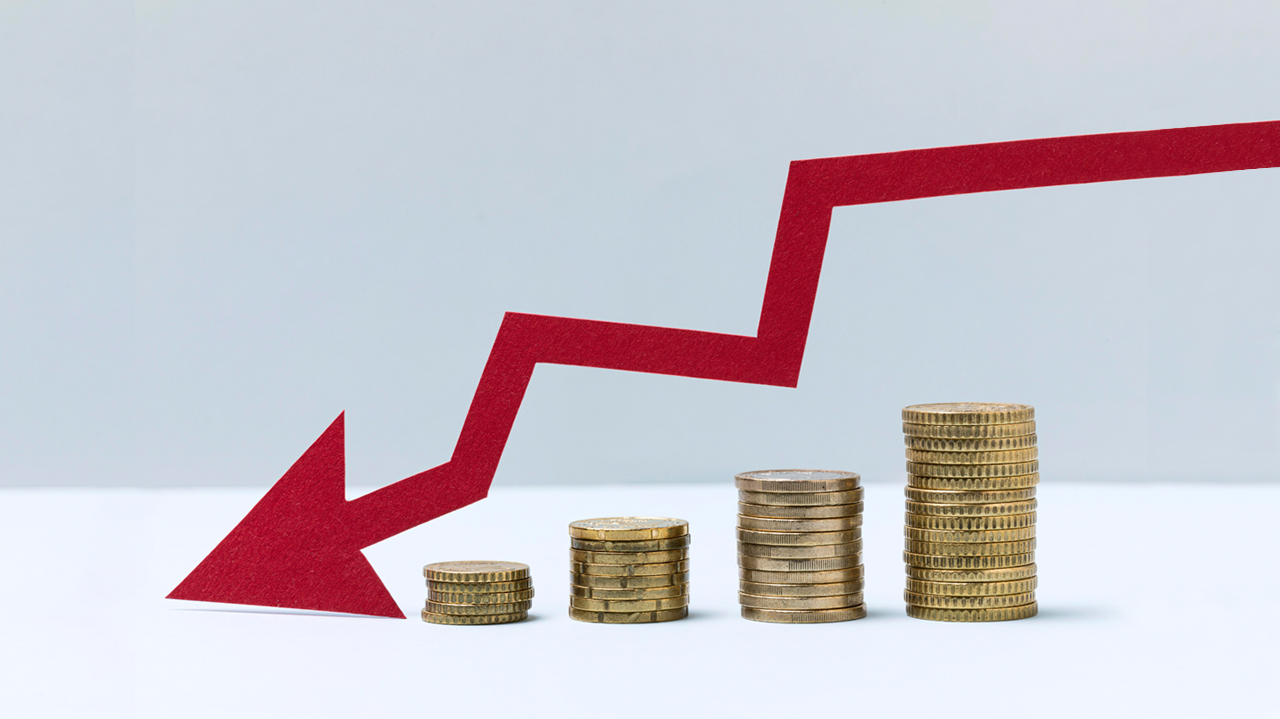What Should Investors Know About Fed Rate Shifts?

The commercial real estate market is susceptible to economic fluctuations, with investment landscapes often reshaped by broader economic trends. Among the most significant factors influencing this sector is the Federal Reserve’s monetary policy, particularly changes in interest rates. As the Fed signals potential rate cuts, commercial investors are reconsidering their strategies, looking to navigate the complexities of a volatile economic environment. In this period of uncertainty, understanding the implications of Fed rate shifts is crucial for investors aiming to maximize their returns. This article will examine the current state of Fed rates, explore the intricate links between these rates and CRE performance, and outline key strategies for managing risks in this complex environment. Additionally, it provides a future outlook to help investors prepare for potential scenarios, equipping them with the knowledge they need to thrive in the ever-changing commercial real estate investment landscape.
Historical Perspective of Fed’s Rate Adjustments and CRE Performance
For investors, 2023 proved challenging, mainly due to the Federal Reserve’s aggressive rate hikes. Since July 2023, the Fed has kept the federal funds rate between 5.25% and 5.50%—the highest level in 23 years. Rising interest rates have put significant pressure on CRE prices globally. Commercial property prices have fallen 11% in the United States since the Federal Reserve began raising rates in March 2022. Meanwhile, the unemployment rate has climbed to 4.3%, up from a historic low of 3.5% just a year earlier, raising concerns about a potential recession. The Federal Reserve’s interest rate decisions directly influence the costs associated with mortgages, auto loans, credit card rates, etc. With U.S. inflation just half a percentage point above the Fed’s 2% target, economists are increasingly predicting rate cuts over the coming years. Although many anticipated more than one rate cut, Bright MLS chief economist Lisa Sturtevant noted that the Fed’s decision to scale back from three cuts to just one would likely disappoint those hoping for a summer rate reduction. She also mentioned that mortgage rates will remain in the high six percent range until later this year. The first potential rate cut could occur as early as September 2024, with additional reductions anticipated in 2025.
The Federal Reserve’s interest rate policies have historically played a pivotal role in the commercial real estate industry. Understanding the history of the Fed’s rate adjustments and their effects on the CRE sector offers crucial insights, guiding investors in making more informed and strategic decisions.
The 1920s and The Great Depression
The 1920s were a period of robust growth for commercial real estate companies, marked by soaring property values and a surge in speculative investments. However, the stock market crash of 1929 set off the Great Depression, leading to a sharp decline in property values and a wave of foreclosures nationwide. While the Federal Reserve had the potential to alleviate some of this economic turmoil, many commercial real estate experts believe that the Fed’s restrictive monetary policies at the time not only failed to curb the downturn but exacerbated and prolonged the financial crisis, deepening the impact on the property market.
Post-War Economic Boom and Expansion
In 1945, after World War II, the United States entered a period of significant economic expansion, which significantly benefited commercial real estate advisory firms. The surge in economic activity and industrial expansion created a strong demand for commercial properties. The Federal Reserve contributed to this growth by maintaining a stable interest rate environment with caps on target rates. This monetary policy provided a favorable foundation for the real estate sector, enabling widespread development and long-term growth across the industry.
Need guidance on preparing for potential rate shifts?
Schedule a Discovery CallThe Early 2000s and The US Housing Bubble
The US housing bubble of the early 2000s has left a significant mark on economic history. It was characterized by rapid growth, high optimism, and intense real estate speculation. However, beneath this veneer of prosperity were troubling financial practices and unhealthy market behaviors, ultimately leading to a market collapse.
The dot-com bubble burst (2000-2002) at the turn of the millennium had already shaken investor confidence and created economic instability. To counteract this, the Federal Reserve reduced the federal funds rate to a historic low of 1% by 2003, aiming to stimulate economic activity. This led to record-low mortgage rates, which fueled a surge in home buying and the rise of risky lending practices, particularly in the subprime mortgage sector. As the housing market grew increasingly unsustainable, the Federal Reserve began raising interest rates, contributing to the bubble’s collapse in 2007-2008. The ensuing financial crisis brought severe consequences, including widespread foreclosures and a global economic downturn. This period underscored the necessity of effective regulatory oversight and responsible lending practices to prevent similar future financial disasters.
Post-Crisis (2008) Recovery
Following the 2008 financial crisis, the Federal Reserve significantly lowered interest rates, bringing them close to zero by 2009. This low-rate environment lasted for several years, aiding the recovery of the commercial real estate (CRE) sector by reducing borrowing costs and supporting a rebound in property values. The availability of inexpensive financing led to a surge in development and acquisition activity, driving up property prices and compressing capitalization rates.
The Climb Back to Normal: 2015-2018
In 2015, the Federal Reserve began gradually raising interest rates, reaching a range of 2.25% to 2.50% by late 2018. This move was intended to normalize monetary policy after years of maintaining ultra-low rates. The effects of these hikes varied across different commercial real estate sectors. The retail industry, already under pressure from the growing dominance of e-commerce, struggled further due to the higher borrowing costs. However, the concurrent economic solid growth helped bolster demand for commercial properties in industrial and multifamily housing sectors, which continued to thrive despite tighter monetary conditions. Later in 2019, during the US and Chinese trade conflict, interest rates were cut by a quarter of a percentage point three times, which Federal Reserve Chairman Powell called “mid-cycle adjustment”. These rate cuts had a positive impact on the overall economy.
Navigating COVID-19 and Post-Pandemic Rate Hikes
The COVID-19 pandemic in 2020 triggered a severe economic downturn in the U.S., prompting the Federal Reserve to slash interest rates to near-zero levels to stabilize the economy and maintain financial liquidity. This policy move stabilized the commercial real estate industry, with specific sectors, like industrial and multifamily housing, showing resilience and growth in property values. However, as the economy transitioned into the post-pandemic period, the Fed began raising rates in 2022-2023 to combat escalating inflation. These rate hikes, combined with the long-lasting effects of the pandemic, have introduced new challenges for the CRE market. The increased borrowing costs have led to reevaluating property value, especially in sectors like office and retail, which were already under strain due to shifting work and shopping behaviors.
Interest Rate Cuts Impact on Commercial Real Estate Development
Interest rates refer to the cost of borrowing money. When interest rates are high, it can be more expensive for buyers to finance the purchase of a property, which may lead to lower demand and prices. When the Fed implements rate cuts, typically in response to economic slowdowns or to encourage growth, these actions profoundly impact property values, investment approaches, and broader market dynamics.
Lower Borrowing Cost
When interest rates drop, they automatically lower the borrowing cost, making financing more manageable. Securing loans for purchasing, developing, or renovating commercial properties becomes more affordable. These lower borrowing costs can significantly impact commercial real estate market trends.
With interest rates lowered, developers can access loans at more attractive terms, easing the financial strain of high-interest payments. This enhanced affordability allows developers to push forward with new projects or expand current ones. Reducing interest payments enhances cash flow, allowing developers to allocate resources toward critical areas such as project development, marketing, and operational expenses. Lower borrowing costs often lead to a wave of new developments, as the potential for higher returns motivates developers to pursue additional projects, stimulating growth and activity within the commercial real estate market.
Lower borrowing costs resulting from a drop in interest rates significantly boost investors’ purchasing power, enabling them to acquire more significant or valuable properties with the potential for higher returns. The reduction in monthly mortgage rates directly enhances cash flow, which can be reinvested into additional investments, property upgrades, marketing, or other ventures, thereby increasing the overall profitability of their real estate portfolio.
Existing property owners benefit from the lower borrowing costs associated with a drop in interest rates. They can allocate more capital toward property improvements or new investments with decreased monthly payments, potentially increasing their returns. This can lead to stronger financial footing for property owners and contribute to a more dynamic and resilient commercial real estate market.
Enhanced Property Values
Interest rates play a crucial role in determining property values, primarily through their effect on the capitalization (cap) rate—a key metric in real estate valuation that reflects the expected rate of return on an investment property. The value of an income-generating property is calculated by dividing the net operating income by the capitalization rate (cap rate).
Property Value = Net Operating Income of the Property/Cap Rate
When interest rates rise, cap rates also tend to increase, leading to decreased property values. Conversely, when interest rates drop, cap rates compress, elevating property values. This inverse relationship means that lower interest rates make properties more valuable by increasing their potential return relative to their cost, thereby enhancing the overall market value of income-generating properties. However, the degree to which property values appreciate depends not solely on interest rates. Factors such as the type of asset, its geographic location, and prevailing market conditions also play crucial roles in determining the extent of value appreciation.
Increased Demand and Enhanced Return
When interest rates drop, the commercial real estate (CRE) market often sees a notable uptick in demand. Lower borrowing costs make it more accessible for investors to finance property acquisitions, making real estate investments more attractive. This increased demand can drive up property values as more investors compete for limited opportunities in the market, especially for high-quality and well-located properties.
Beyond just fueling demand, reduced interest rates have a direct positive impact on a property’s financial return. Lower borrowing costs mean that a more significant portion of rental or operating revenue contributes directly to the Net Operating Income (NOI), improving the overall Return on Investment (ROI). As property values appreciate due to the heightened demand and favorable financing conditions, investors stand to gain even more from income generation and asset appreciation.
Furthermore, lower mortgage rates enhance the net income generated by properties, resulting in improved cash flow. For existing property owners, reducing debt servicing costs allows capital allocation towards renovations or expansions, increasing the property’s marketability and long-term profitability. These combined advantages can foster a more dynamic and profitable marketplace for commercial real estate investors.
Impact on Different Property Types
Some property types may be more sensitive to interest rate adjustments than others. For instance, net lease properties, which have long-term leases with fixed annual rent increases, may not benefit as directly from lower interest rates. Although reduced borrowing costs can improve overall returns, the fixed rent structure means these properties have limited flexibility to respond to broader economic changes.
In contrast, properties with shorter-term leases tend to be more adaptable. Their rental income can adjust more frequently with market conditions, allowing them to better capitalize on shifting interest rates and economic trends. This adaptability often makes short-term lease properties more resilient and potentially more profitable in a changing financial landscape.
Challenges and Considerations
Fed’s rate cuts can offer immediate benefits and potentially set the stage for long-term growth in the CRE sector. However, they also have specific risks and challenges that investors must consider carefully. Some of the significant challenges and considerations are noted below:
Increased Property Prices: As demand for commercial properties increases due to interest rate cuts, property prices surge, which can sometimes be excessively high. This escalation may limit future appreciation potential and shrink profit margins for investors.
Potential Asset Bubbles: Extended periods of low interest rates can lead to the formation of asset bubbles, where prices are driven by speculation rather than actual value. Historically, such bubbles have led to severe investor losses when they inevitably burst.
Inflation Considerations: Inflation and interest rates generally move inversely, so a decrease in interest rates can lead to higher inflation. This rise in inflation can undermine the actual value of rental income and increase operating costs. Assessing the potential long-term effects of inflation on investment returns is crucial.
Sector-Specific Challenges: Investors should carefully analyze the risks associated with various property types, as their reactions to interest rate fluctuations can differ. Lower interest rates might positively impact sectors like multifamily and industrial properties, and office and retail sectors could continue to struggle.
Long-Term Economic Implications: Lower interest rates can temporarily spur economic activity but may also indicate underlying economic vulnerabilities. Investors must analyze the durability of the current economic climate and its possible effects on their future investment approaches.
Conclusion
As the Federal Reserve signals potential rate cuts, the commercial real estate market is poised for notable shifts. These changes present opportunities and challenges: lower borrowing costs can drive up property values and improve returns, but they also risk inflating prices and creating asset bubbles. Additionally, the inverse relationship between interest rates and inflation introduces further considerations, as rising inflation could affect rental income and operational expenses. A comprehensive understanding of these dynamics will be essential for developing robust investment strategies and achieving long-term success. In this evolving environment, with our commercial real estate expert’s deep market insights and strategic approaches, Allies Commercial Realty stands ready to guide investors through these changes. Reach out to us today, and let us help you turn market changes into opportunities.
Topic: Interest Rate
Ready to discuss how interest rates can shape your investments?
Talk to a Broker
About the Author - Adam Stephenson, CCIM, SIOR
With over a decade of experience in commercial real estate, Adam is a trusted advocate for privately held organizations, specializing in industrial properties across Central Indiana. Adam brings a wealth of expertise in tenant representation, lease negotiations, and strategic asset acquisitions. A graduate of Indiana University – Indianapolis with a degree in Business Management, he further distinguished himself by earning the prestigious CCIM & SIOR designations. His deep industry knowledge, client-focused approach, and commitment to delivering tailored solutions make his insights invaluable.
Download Our Free Resource:
2025 Edition - CRE Forecast:
Trends And Predictions For CRE.

You might also enjoy reading:
Cookies improve your browsing experience, deliver tailored ads or content, and assess our website traffic. If you click 'Accept All’ you are giving your consent for us to utilize cookies. Check our cookies policy here.
Adding {{itemName}} to cart
Added {{itemName}} to cart





















